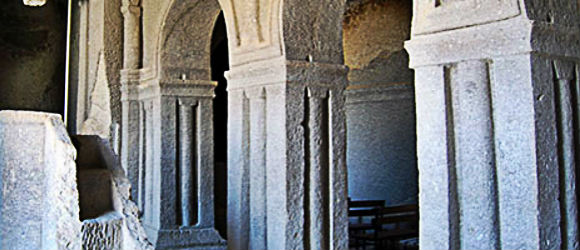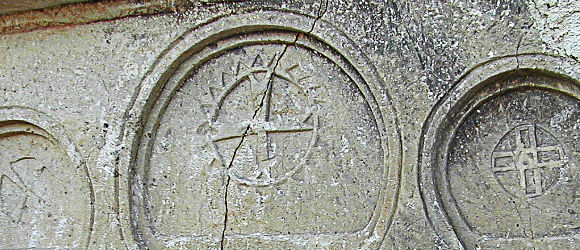In the Goreme Open Air Museum near the village of Avcılar (Maçan), there is a monastery linked with the church known as Yusuf Koç Church. The rooms of this monastery are grouped around the edges of a large cone and may extend into two more cones to the […]
Read more →This basilica style church differs from the others in that it has a pulpit in the centre, its columns are thick and rectangular in shape, it has a baptistery and graves hollowed out of the walls in the first section. The church, dating back to the 6th […]
Read more →Built by a donor named Anna, the Chapel of St. Catherine dates from the 11th century. It has a Greek-cross-shaped nave, with a dome over the center and barrel-vaulted cross arms. The narthex has nine floor tombs and two burial niches. The bodies of holy martyrs and […]
Read more →The Dark Church is the most important sight in Goreme open-air museum and is the most richly decorated of the churches here. Lit by only one skylight, the darkness has preserved the frescoes, which have been carefully restored and can now be seen in all their glory. […]
Read more →This church has the name of Çarıklı Kilise (The Church with Sandals) because of the footprints scooped out of the ground in the Southern transep, under are a copy of those of Jesus which were venerated in the Sanctuary of the Ascension in Jerusalem. The series of […]
Read more →The Snake Church is surrounded by several rooms in the rock, including the refectory which is adjacent to the church, and several others above. The church itself is a long, narrow room divided into two different sections. Immediately after the entrance, the left wall bears a niche. To […]
Read more →This church was carved into the rock at the right side of the road passed the Girl’s convent while going to the region of Churches. A dome was placed over four pillars. It has one big and two small apsises. Although the frescoes of the Ikonoclastic Age […]
Read more →Tokali Kilise (Turkish; Buckle Church) was the principal sanctuary of a large monastic center in Byzantine Cappadocia, now central Turkey. This cave church was carved into the soft volcanic stone of the region and decorated with frescoes in several stages between the mid-ninth and mid-tenth centuries, and […]
Read more →At the time of Paul’s travels, Nicea shared with Nicomedia (İznik) the rivalry for the most important city of Bithynia. In 74 A.D. it was incorporated into the Roman province of Asia and, in spite of being levelled In the earthquake of 123 A.D., it continued to […]
Read more →









